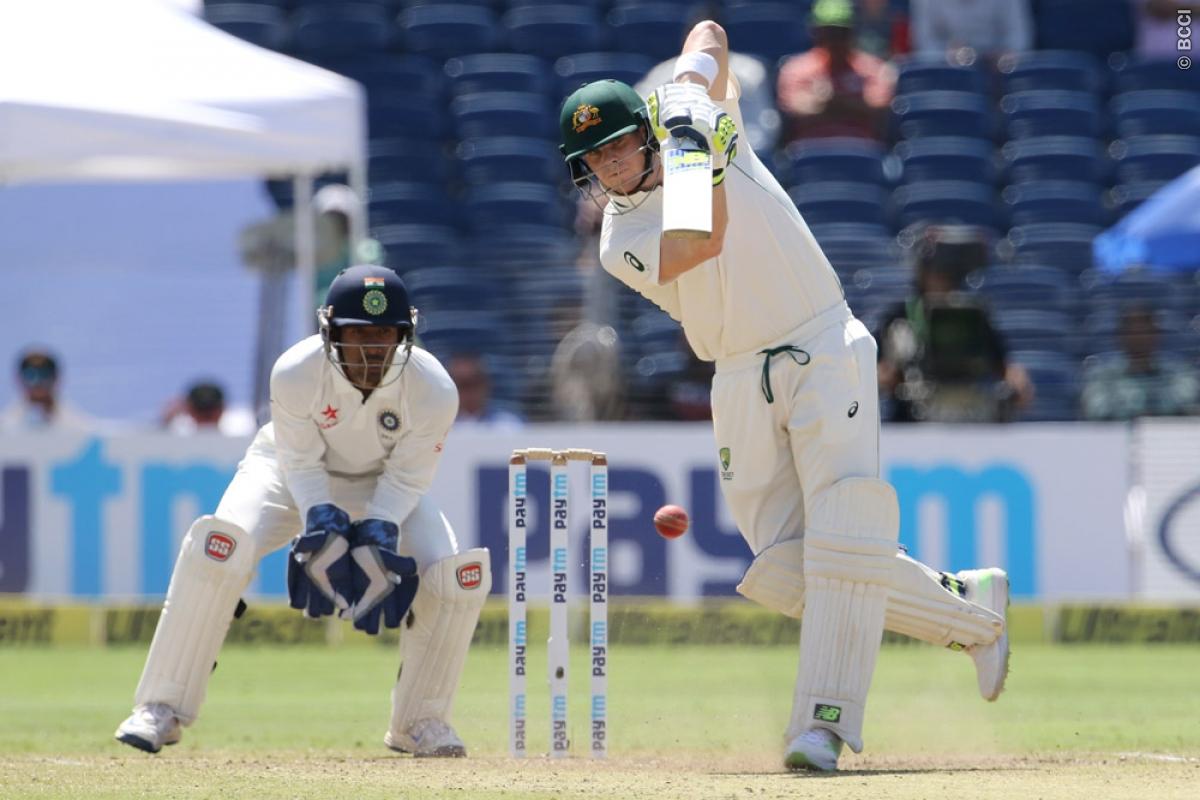Virtual eye admit to dodgy Steve Smith ‘fourth stump’ DRS decision being erroneous
Ian Taylor, MD of Virtual Eye that operates DRS in Australia and New Zealand, admitted that the ‘fourth stump’ graphic popping up in a DRS call in the SCG Test was a goof-up, and took full responsibility for the blunder. Taylor, however, defended the legitimacy of the Labuschagne LBW call at MCG.

The Decision Review System (DRS), moreso ball-tracking, came under heavy scrutiny and criticism in the recently-concluded India-Australia Tests, but one LBW decision - rather, graphic - elicited more reactions than the rest. It was a call involving Steve Smith in the second innings of the third Test at the SCG, wherein, despite the ball seemingly, to the naked eye, missing leg-stump by a mile, DRS showed the ball clipping the stumps. The decision felt odd in real-time, but then users on Twitter noticed that the ball, in fact, was clipping a ‘fourth stump’ that bizarrely popped up in the graphic. Smith survived because he was ruled not-out on field, but now, Virtual Eye have come out and admitted their mistake and have claimed that they take full responsibility for the goof-up.
"We reported that immediately to the people we work with at the ICC because it was a mistake on our part -- fortunately it did not affect the decision, the umpire was correct, but it should not have happened. We take full responsibility for that but the important thing was that the decision to stay with the umpires call was the correct one -- the real ball track did show the ball missed," Ian Taylor, the MD of Virtual Eye that operates DRS in Australia and New Zealand, told Cricbuzz.
Taylor described the whole blunder as a ‘human error’, and explained the turn of events which led to the graphic displaying a fourth stump on the screen.
"We tracked the ball normally in our tracking system and it showed it missing the stumps. For the DRS the next step is to play the ball track back, superimposed over the 'end on' broadcast TV camera when the 3rd umpire calls for it. At the start of play we calibrate the two TV cameras at each end of the pitch to ensure they are perfectly aligned when we play our ball track over the live camera. When we did that, before going to air, it was fine and the ball was clearly missing.
"Just before we were going to replay, the end-on camera lost focus for an instant and when that happens it loses its calibration and we have to recalibrate. It happens a few times during the day but this was the first time it had ever happened between the time we tracked the ball and the time we had to replay it.
"Our operator went through the recalibration programme to realign the camera -- he thought he had successfully done that but as soon as he replayed the video with the track on it, he realised that it hadn't recalibrated correctly because the ball was now clipping the stump rather than missing it.
"It was human error on our part. Fortunately, the error was within the 'umpires call' margin so the result stood -- as it should have, because the ball in our track was missing the stumps. It is perhaps a good example of why there is an umpires call margin -- it is for occasions when the technology might make a mistake. This time it wasn't technology -- it was a human error which we take responsibility for. To put that in context -- on any given Test we track over 2,000 balls without an issue."
The Australian fans suffered a mini heart-attack in the case of the Smith decision, but the Indian team were left agitated by a call involving Marnus Labuschagne at the MCG. Labuschagne was ruled ‘out’ by the on-field umpire, but, remarkably, when the batsman reviewed the decision, ball-tracking showed the ball comfortably going over the stumps. It was another decision which beggared belief, but Taylor claimed that there was nothing wrong or dodgy about that particular call.
"We actually capture on every ball. We have reviewed the Ashwin ball and we are confident that the ball would have gone over the stumps. We had the measurements for the angle the ball was going into the pitch and the angle coming out."

Comments
Sign up or log in to your account to leave comments and reactions
0 Comments